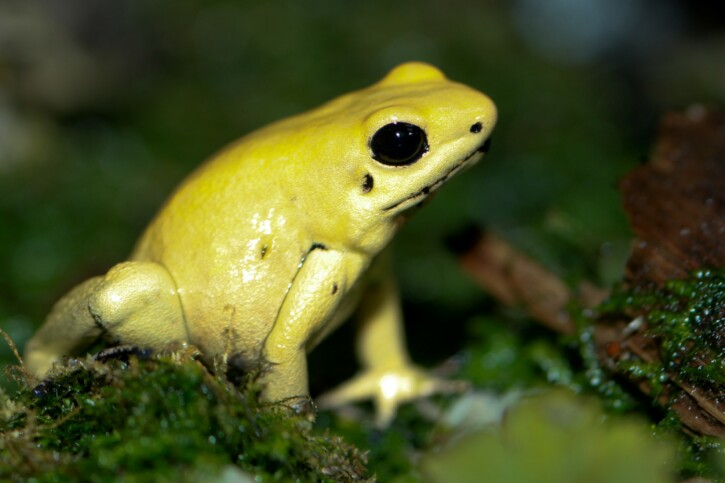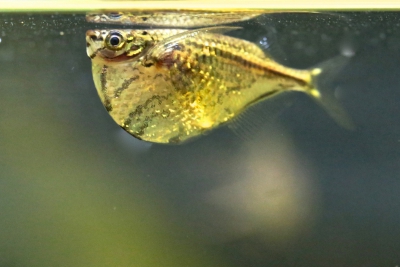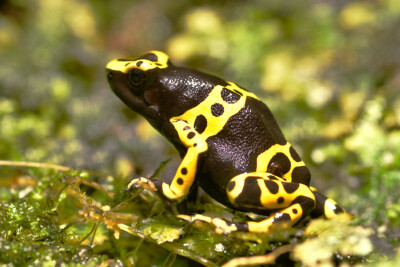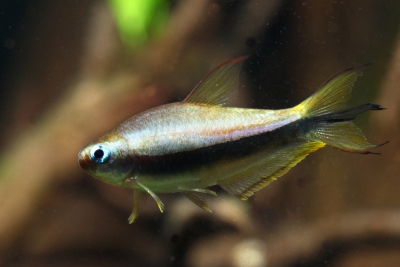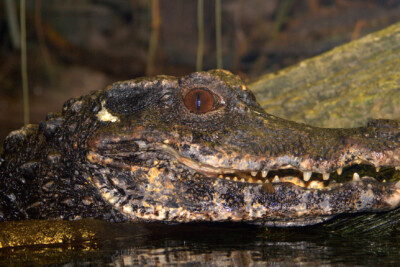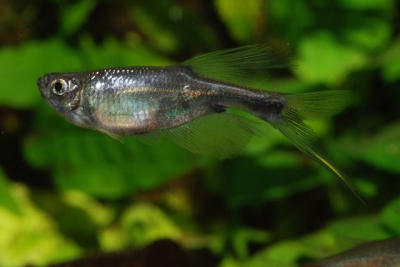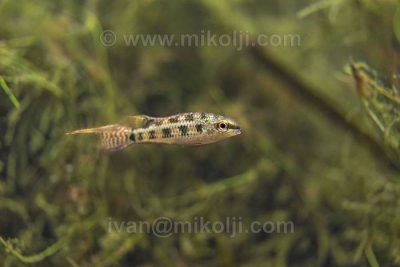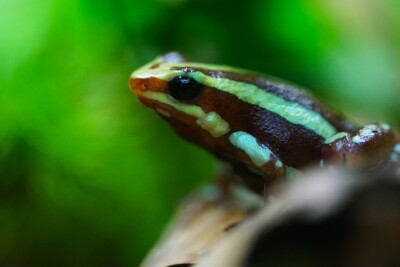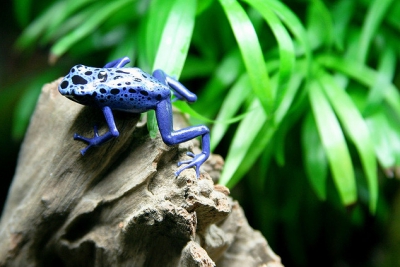golden poison frog
| Scientific name | Phyllobates terribilis |
|---|---|
| Descriptor | Myers, Daly & Malkin |
| Year of description | 1978 |
| IUCN category (World) | EN |
| Family | Dendrobatidae |
| Genus | Phyllobates |
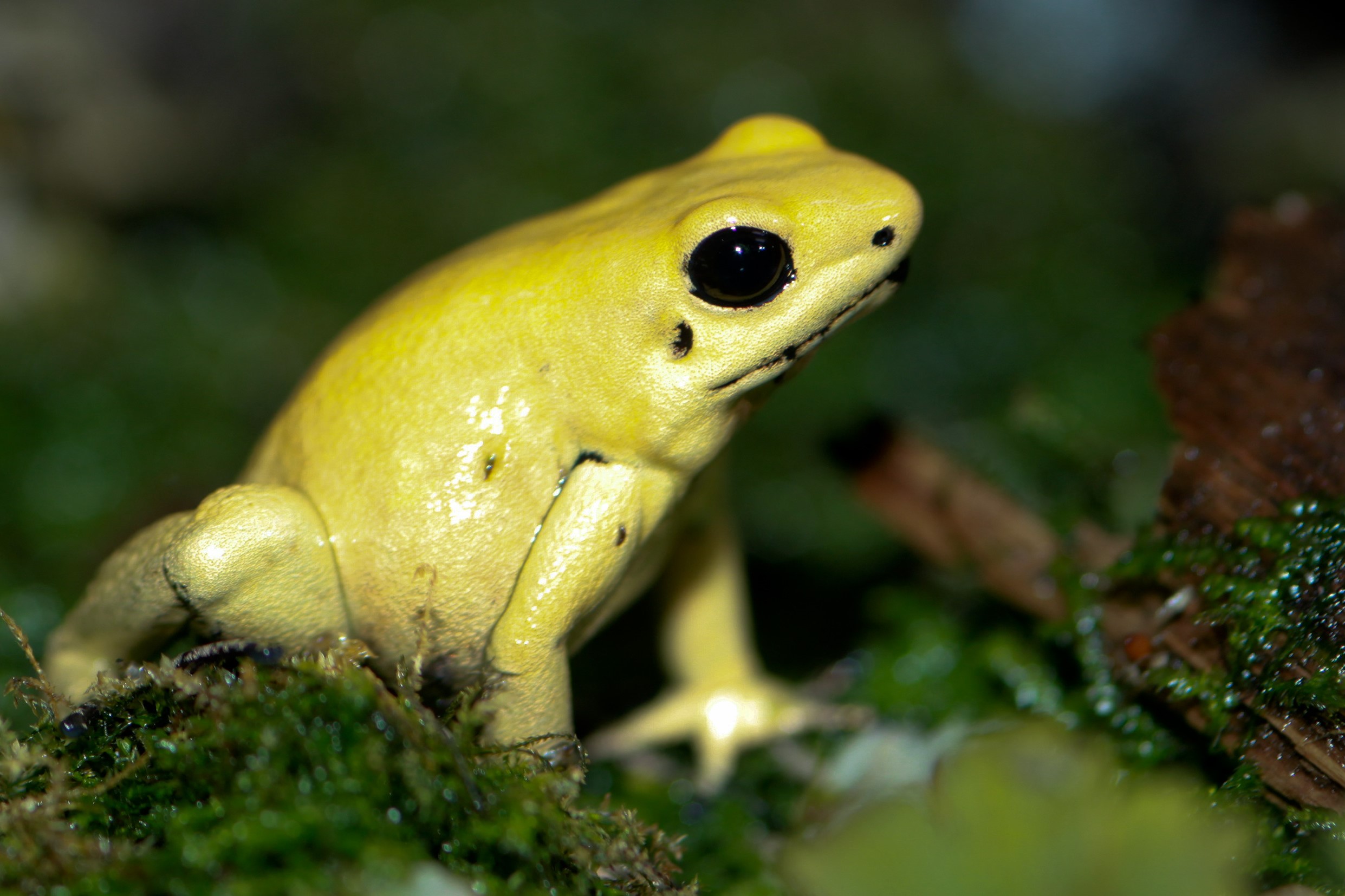

Introduction
The golden poison frog is a small terrestrial frog, known for the toxicity of its skin. Native to the humid tropical forests of Colombia, it is renowned for its bright colors and potent venom.
This species belongs to the Dendrobatidae family, well known for their toxic properties. The venom is used by local communities to poison hunting darts.
Who is it?
Morphology
-
Size3.5 - 4.7 cm
-
Longevity5 year
-
Size3.5 - 4.7 cm
-
Longevity5 year
How to recognize this amphibian ?
The golden poison frog has an average size of 37 to 47 mm, with females slightly larger than males.
Its skin is smooth, sometimes slightly granular on the hind limbs, and its coloration can vary from golden yellow to metallic green. Its fingers and toes end in adhesive discs adapted for terrestrial locomotion.
Sexual dimorphism
Females are slightly larger than males, and males have a barely visible subgular vocal sac that allows them to emit sounds to attract females.
Behaviour & Life cycle
-
SociabilityThe following information corresponds to the mode of sociability once sexual maturity has been reached.solitary
-
Way of livingdiurnalAn animal is said to be diurnal when it lives during the day.
-
VenomousYes
-
Dietpredator
This species is known to emit sounds easily audible by humans.
The golden poison frog is a diurnal species, primarily terrestrial. Unlike other frogs, it is relatively visible and does not actively hide when disturbed. It lives solitary lives, though mating pairs are sometimes observed during the breeding season.
Reproduction
-
Reproductionovipare
This species reproduces through external fertilization. Eggs are laid on land in small clutches, and males transport the tadpoles on their backs to water bodies where they develop. Parental care is primarily provided by the male.
Harmless species
The golden poison frog poses a danger to humans due to the toxic alkaloids present in its skin, especially batrachotoxin.
Origin and distribution
Geographic distribution & Conservation
The golden poison frog is endemic to Colombia, where it resides in the humid tropical forests of the western Andean foothills. It can be found at altitudes ranging from 90 to 200 meters, in rugged and humid areas, often near small streams.
The golden poison frog is classified as an Endangered species by the IUCN due to the reduction of its natural habitat, primarily caused by deforestation and agricultural exploitation. Its restricted range and the continuous destruction of its forest habitat increase its vulnerability. Human activities, including agriculture and pesticide spraying, pose direct threats to this species.
Conservation status of populations (IUCN)
What is its habitat?
Natural environment characteristics
-
Temperature25 - 28 °C
Biotope presentation
The biotope of the golden poison frog consists of humid tropical forests, where it resides at low altitudes. It prefers primary forest environments with high humidity and dense vegetation, near small streams or temporary ponds.
Species of the same biotope
To go further
Sources & Contributions
Participation & Validation
The Fishipedia team and specialist contributors are committed to providing high-quality content. However, although the information comes from scientific sources or testimonials from specialists, the cards may contain inaccuracies.

Benoit Chartrer
Translation
Translation done with the valuable contribution of our translators, who make this information available to a wider audience. We sincerely thank them for their commitment.
Scientific partners
Tags
Species of the same family
Species of the same biotope
